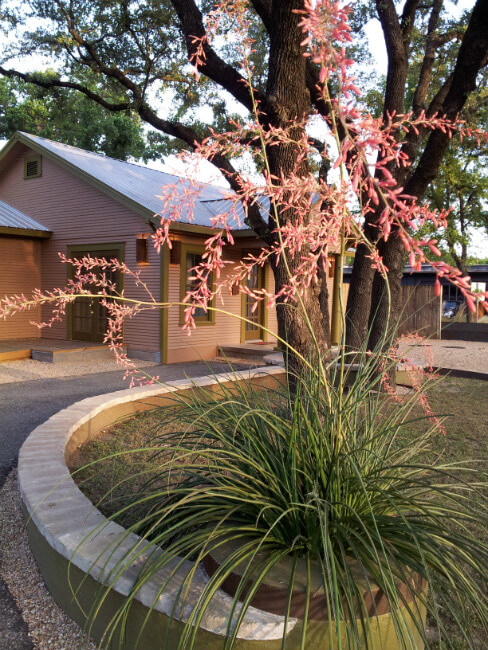There’s nothing like a week of deep freezes to separate the wheat from the chaff when it comes to evergreen foundation plants.
This week’s seasonal star is red yucca (Hesperaloe parvifolia), not because it’s in full bloom in January, but because it stood up to last week’s 14-degree weather without blinking — even on the heels of a two-year drought.
It’s an easygoing, undemanding, truly low-maintenance plant: bona fides that are appreciated when freezer burn has provided plenty of other winter cleanup tasks for our home gardens.
You may see red yucca so often you barely notice it. While it’s not strictly native to Bexar County, it is native around the Pecos and Devil’s Rivers. And, in WaterSaver landscaping it is so widely used it’s as iconic as the big boots at North Star Mall.

It’s not strictly a yucca at all, rather a member of the humbly named “false yucca” group. But it’s as tough as any yucca: you’ll often see it deployed in irrigation-free hummingbird gardens, sunny commercial landscapes and park trailheads. It’s tough enough and showy enough to anchor a parking lot island or a roadway median in style. It’s even been recommended for use in green roofs because it can stand up to both dry summer sun and winter cold.
Red yucca is a showpiece in spring and summer, when tall wands of coral pink flowers rocket upwards to arch 5 feet above its low mound of fibrous leaves. A red-flowered dwarf version, “Brake Lights,” provides the same effect in a smaller, redder snapdragon-size perfect for lining driveways, walkways and flowerbeds. Both are classic water-saving plants. In the last seven years of Texas weather, in heavy clay soil, I’ve found I only needed to water mine once — at the first planting, no less.
There’s nothing like a week of deep freezes to really separate the wheat from the chaff when it comes to evergreen, architectural foundation plants. While plants like agave and sago palm can sometimes require extensive cleanup after teen temperatures, red yucca is consistently a trooper (even in the record deep freeze of 2021).
Technically it is hardy in USDA Zones 5 to 10 (everywhere from South Texas to Idaho, Montana and Maine). Its cheeks may redden a bit in winter, adding a touch of plum color to its usual deep green, but that’s about as much exertion as you’ll ever see on a red yucca.
So, enjoy! And next summer when it’s in bloom, you can enjoy it again while it’s in full swing. No water necessary.


